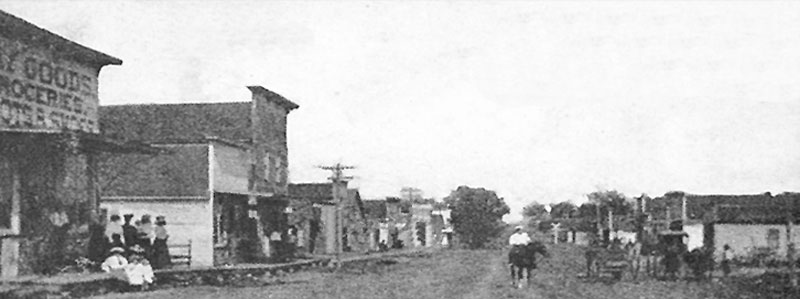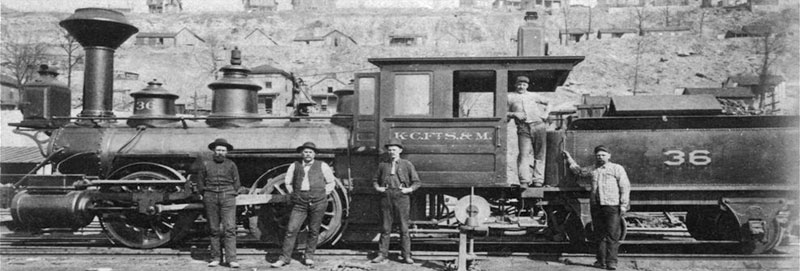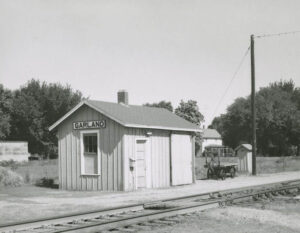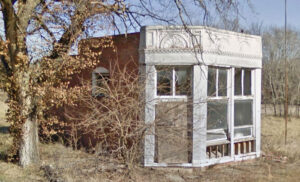
Garland, Kansas Main Street.
Garland, Kansas, in southeast Bourbon County, started in the fall of 1874 as a town called Memphis. It is an extinct town today.
Memphis was laid off on a 40-acre townsite belonging to D.N. Phelps. The town company, composed of D. N. Phelps, W. R. Clybourn, and T. Woodard, was laid off by M. M. Hellman.
The first building was a storehouse, which was moved to the site by the firm of Sweeny & Benson to be used as a general merchandise store. At about the same time, Keith & Henry moved a store room to the site, where they put in a stock of general goods. During the winter, they were joined by J. M. Terry with another general store, B. Daily with a boarding house and restaurant, and the firm of McLean & Linn also began dealing in miscellaneous merchandise. Memphis was the railroad’s terminus, projected to run from Kansas City to Memphis, Tennessee.

Kansas City, Fort Scott & Memphis Railroad about 1890.
The post office was moved from nearby Appleton on February 1, 1875, with W. R. Clybourn commissioned as postmaster. Appleton, established in 1866, was just near the state line between Kansas and Missouri. After Memphis was established, it absorbed Appleton.
The Baptists held the first religious services in the depot in the summer of 1875, during which time a Sunday school was organized.
For some time, the people had little hope of the road being completed to its projected destination since it remained completed only to Memphis, Kansas, for several months. During this time, the immense coal fields in the vicinity were developed, and the town became important as a coal shipping point. However, the road building was again taken up and was fast approaching the projected point, which would demand a change of the name of this station.
The first school, taught by Miss Adelia Moore in 1878, was kept in a private residence. In early 1879, a school building was erected, and Mrs. James was the teacher.
The town, being the terminus of the road for so long, and the development of the coal interests caused it to spring up rapidly, and at one point, it had a population of about 350.
After the road extension began, the town began to decline, and by the early 1880s, its population had dropped to about 100. However, it still had six general stores, two drug stores, two blacksmith shops, a corn mill, a schoolhouse, a post office, two churches, and several homes.
A small frame Baptist church building was erected in 1881, followed by the Methodists in 1882.
On March 18, 1886, the town’s name was changed from Memphis to Garland.
In 1910, Garland was located on the St. Louis and San Francisco Railroad, a shipping point for a rich agricultural district. It had a money order post office, telegraph and express facilities, and a population of 276.
Garland did not grow in the next decades, and its post office closed on November 1, 1997.
Today, Garland is a ghost town. It still has named streets and a scattering of homes — some still lived in and others in ruins. Along its old Main Street are a few old business buildings, a volunteer fire department, and a community center amongst its broken sidewalks. The Mt Zion Missionary Baptist Church is still active.
It is located along the Missouri state line 8.5 miles southeast of Fort Scott.
©Kathy Alexander/Legends of Kansas, updated May 2024.
Also See:
Extinct Towns of Bourbon County
Sources:
Blackmar, Frank W.; Kansas: A Cyclopedia of State History, Vol I; Standard Publishing Company, Chicago, IL 1912.
Cutler, William G; History of Kansas; A. T. Andreas, Chicago, IL, 1883.



